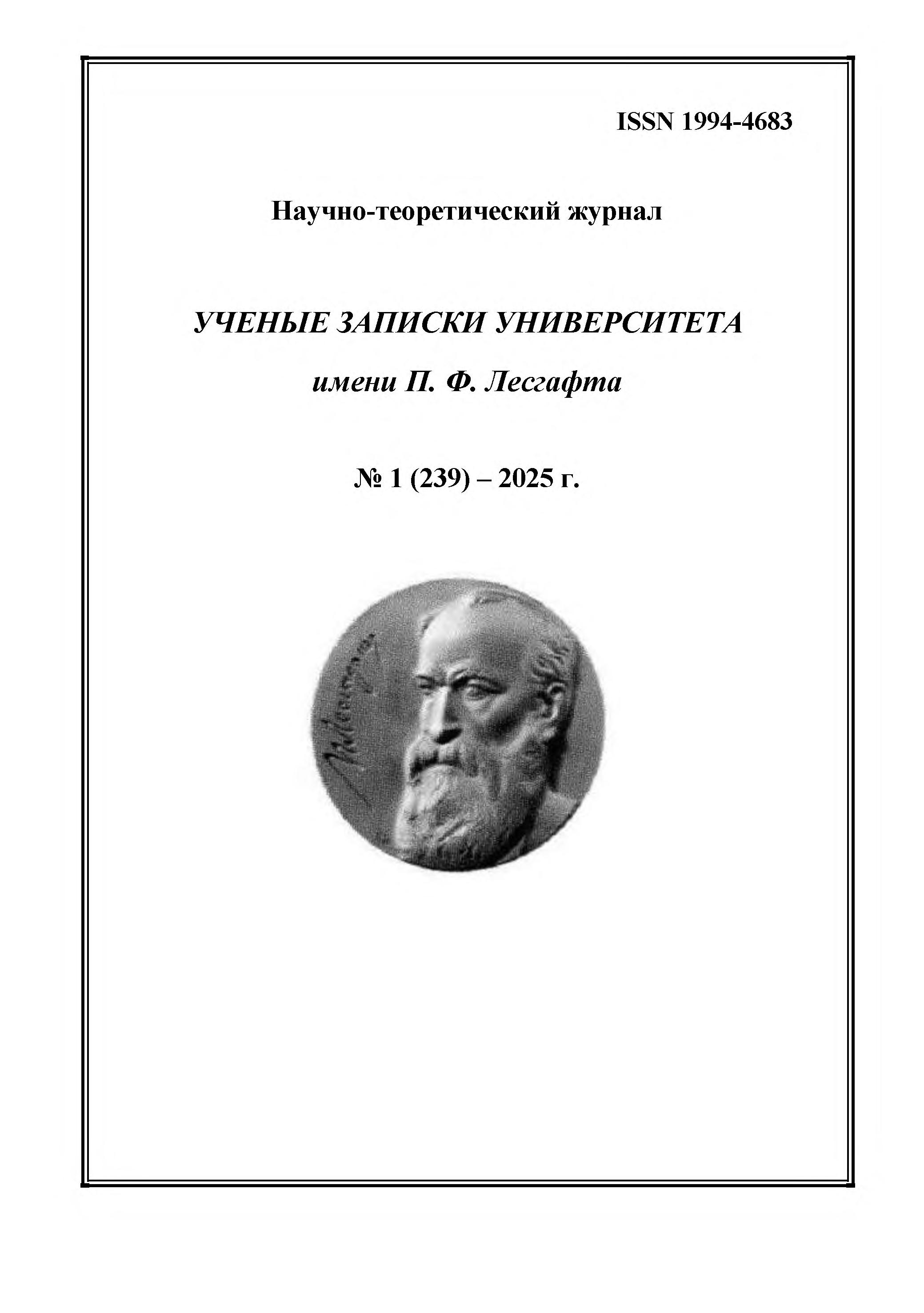employee from 01.01.2015 until now
Balashiha, Russian Federation
VAK Russia 5.8.5
UDC 796
CSCSTI 77.05
Russian Classification of Professions by Education 49.00.00
The purpose of the study is to examine the main morphometric characteristics and explore their relationship with sports results in the heptathlon and pentathlon based on the total points scored. Research methods and organization. The athletes (Master of Sports of International Class, Master of Sports, Candidate for Master of Sports, and 1st category), with a sports experience ranging from 7 to 15 years, were examined, with an average age of 21 years. A unified anthropometric methodology adopted by the D.N. Anuchin Institute of Anthropology was employed. The primary components of body weight and size were recorded. Body weight components were calculated using the formulas of Czech researcher Matejka. Measurements were conducted during the competitive period, on the eve of the start in heptathlon or summer polyathlon. The result of each athlete (the total score attained) was also recorded. Conventional methods of variational statistics were used in processing the obtained data. The relationship between the characteristics was determined using pair correlation methods. Research results and conclusions. It has been established that women specializing in the heptathlon and pentathlon have a similar body length to high jumpers, long shins like hurdlers, long upper limbs comparable to javelin throwers, and body circumference measurements akin to the strongest athletic group among female athletes. An analysis of the relationship between athletic performance in combined events and body composition indicators revealed that these morphological traits are significantly correlated with the level of athletic performance and can serve as a valuable criterion for assessing the readiness of female athletes for competitions. It is recommended that multi-event athletes regularly undergo morphological assessments, monitor the effectiveness of their training sessions, and observe the dynamics of changes in body fat and muscle components throughout the macrocycle.
heptathlon, summer polyathlon, sports morphology, morphological traits, components of body weight, body dimensions, women's sports
1. Lepikhov A. A., Zaripov R. F., Martynov Ya. A., Muromtseva I. S. (2024), “Training methods and means of successful performance in summer polyathlon”, Molodoiuchenyi, No. 8 (507), pp. 272–274.
2. Mandrikov V. B., Zubareva E. V., Rudaskova E. S., Adelshina G. A., Samuseva V. R. (2014), “The dependence of the manifestation of morphological signs of masculinization of female athletes on the type of constitution”, Billyuten' Volgogradskogo meditsinskogo universiteta, No. 1 (49), pp. 40–43.
3. Sokha T. (2007), “Morphofunctional features of female athletes in the aspect of sexual dimorphism”, Teoriya i praktika fizicheskoi kul'tury, No. 11, pp. 2–6.
4. Guba V. P., Bulykina L. V., Achkasov E. E., Bezuglov E. N. (2021), “Sensitive periods of children's development. Definition of sports talent”, a monograph, The Sports man, Moscow.
5. Oleinik E. A. (2013), “Comparative analysis of anthropometric indicators of female student-athletes of cyclic sports”, Uchenye zapiski universiteta imeni P.F. Lesgafta, No. 3 (97), pp. 154–159.
6. Oleinik E. A. (2021), “Somatotypology in modern women's sports. Complex coordination and game sports”, a monograph, P.F. Lesgaft National State University of Physical Culture, Sports and Health, Saint Petersburg.
7. Balakhnichev V. V., Vrublevsky E. P., Mirzoev O. M. (2007), “Selection and training of female athletes in athletics from the perspective of sexual dimorphism”, Teoriya i praktika fizicheskoi kul'tury, No. 4, pp. 11–15.
8. Zelichenok V. B. Nikitushkin V. G., Guba V. P. (2000), “Athletics: selection criteria”, Terra sport, Moscow.
9. Nikiforova O. N., Markin E. V., Sorokin D. V., Khoteeva M. V. (2023), “Sports training in summer polyathlon based on the rational distribution of training loads”, Teoriya i praktika fizicheskoi kul'tury, No. 1, pp. 94–96.
10. Gilmutdinov T. S. (2002), “Physiological characteristics and the leading factors determining athletic performance in summer polyathlon”, Poliatlon, No. 1-2, pp. 2–4.
11. Guba V. P. (2000), “Morphobiomechanical research in sports”, Sports Academy Press, Moscow.
12. Guba V. P., Chernova V. N. (2020), “Sports morphology”, Soviet sport, Moscow.
13. Nikiforova O. N., Khoteeva M. V., Prokhorova T. I. (2019), “Aimed at improving the functional capabilities of polyathlete students in preparation for endurance running”, Pedagogiko-psikhologicheskieimediko-biologicheskieproblemyfizicheskoikul'turyisporta, No. 1, pp. 38–44.
14. Farfel V. S. (2011), “Movement control in sports”, Soviet sports, Moscow.
15. Negasheva M. A. (2017), “Fundamentals of anthropometry”, Econ-Inform, Moscow.
16. Solodkov A. S. (2014), “Physical performance of athletes and the general principles of its correction”, Uchenye zapiski universiteta imeni P.F. Lesgafta, No. 3 (109), pp. 148–158.







